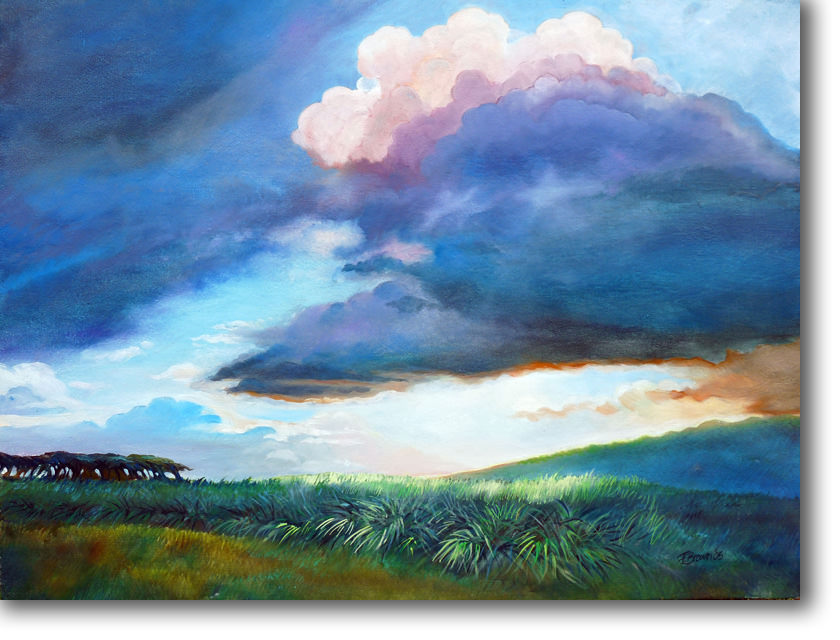
Canefield
| Oil on canvas 20x30 |
$650.00
SOLD
Much like cotton, sugarcane plantations motivated large scale near-enslavement and migrations of human beings in the 19th and early 20th century. Following the emancipation of slaves in 1833 in the United Kingdom, many liberated Africans left their former masters. This created an economic chaos for British owners of sugar-cane plantations. The hard work in hot, humid farms required a regular, docile and low-waged labour force. The British looked for cheap labour. This they found in China and India.Although sugarcanes produce seeds, modern stem cutting has become the most common reproduction method. Each cutting must contain at least one bud, and the cuttings are sometimes hand-planted. In more technologically advanced countries like the United States and Australia, billet planting is common. Billets harvested from a mechanical harvester are planted by a machine which opens and recloses the ground. Once planted, a stand can be harvested several times; after each harvest, the cane sends up new stalks, called ratoons. Successive harvests give decreasing yields, eventually justifying replanting. Two to 10 harvests are usually made depending on the type of culture. In a country with a mechanical agriculture looking for a high production of large fields like in Hawaii, sugar canes are replanted after two or three harvests to avoid a lowering in yields. In countries with a more traditional type of agriculture with smaller fields and hand harvesting, like in the French island la Réunion, sugar canes are often harvested up to 10 years before replanting.



